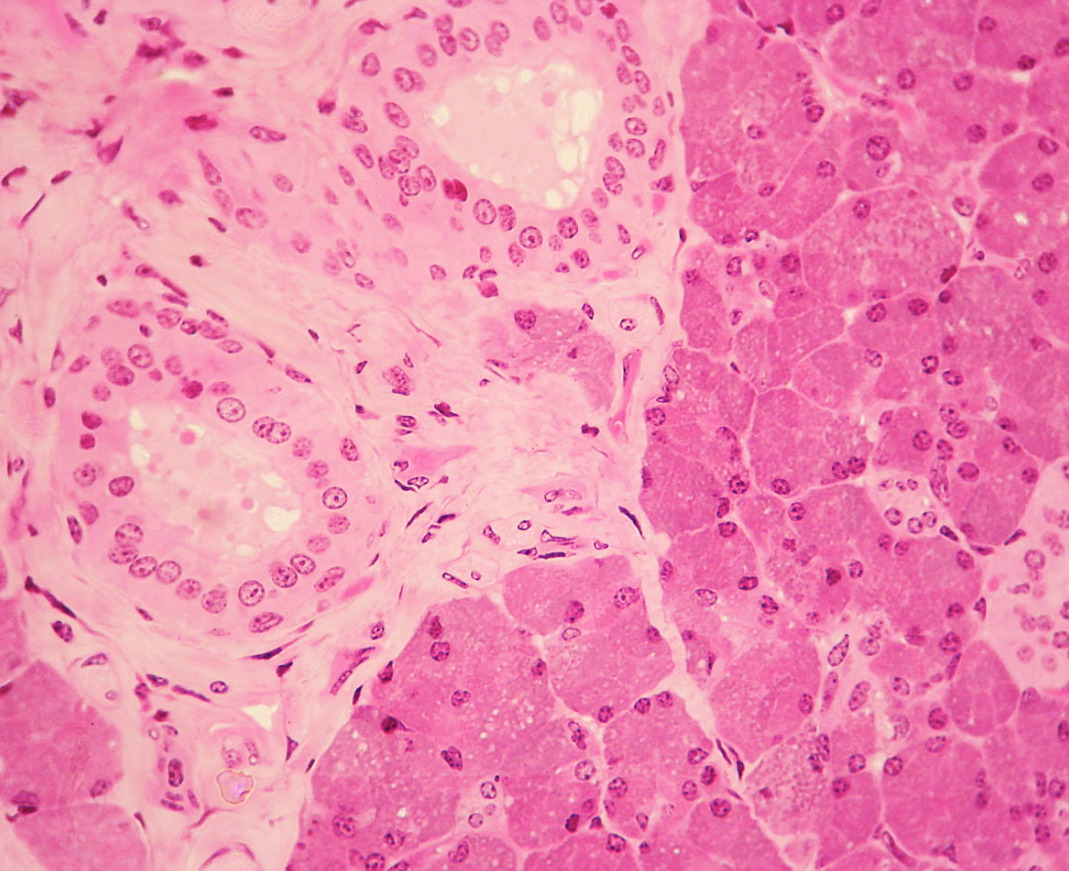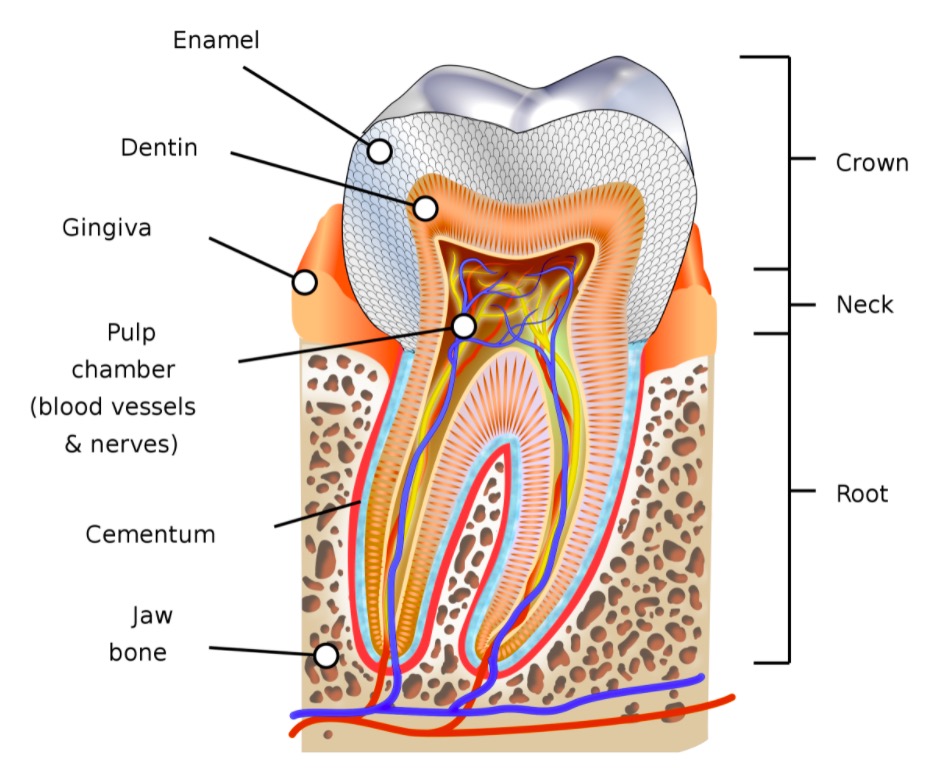Playlist
Show Playlist
Hide Playlist
Oral Cavity: Summary
-
Slides Digestive system oral cavity.pdf
-
Reference List Histology.pdf
-
Download Lecture Overview
00:00 So let me just summarize the sorts of structures we've looked at in this lecture. We'vee looked at the lip, the tongue, particularly, the dorsal surface. We'vee looked at salivary glands. And so in the review then, let's just summarize the sorts of things that you may have learned during this lecture. 00:27 The oral and masticatory mucosa are very important because they are very firm surfaces that aid in resisting the abrasion in the oral cavity when we mechanically break down food. They're adhered to the hard surface of the hard palate. 00:45 And that's where most of the breakdown of food occurs, and also around the gingival region, which is the bit of the oral mucosa attaching to the tooth. We saw the different structures of the tooth, the enamel that breaks down the food mechanically into smaller parts; and the tongue, the role of the tongue, the muscle layers in the tongue that move the food around inside the oral cavity and act as a shovel pushing that food up against the hard palate. And the tongue has that very sort of corrugated rough surface on the dorsum of the tongue that helps to hold that food. The tongue also, besides being the organ for speech, is also very important for swallowing. 01:39 We didn't go through those two components in this lecture, but they are covered in another lecture. But they are very important functions of the tongue that we should mention here because they are a part. Certainly, swallowing is part of the function of the oral cavity. Speech is very importantly monitored or changed by our tongue. It changes the sounds that the individual has. The tongue, remember, also contains taste buds which are the receptor organs for detecting taste. 02:12 And remember the different salivary glands, the parotid, the sublingual, and the submandibular gland. And just remember what sort of general secretory products they do produce and secrete. And know how to tell the difference between them. 02:31 Maybe using my little trick I told you about earlier in the lecture. 02:35 And probably also remember the different duct systems in these salivary glands and the importance of the intercalated duct, and also the striated duct, particularly, in serous secreting glands. So thank you for listening to this lecture. 02:51 I hope you now know a fair bit of histology about structures in the oral cavity, that are very important components of the digestive system.
About the Lecture
The lecture Oral Cavity: Summary by Geoffrey Meyer, PhD is from the course Gastrointestinal Histology.
Included Quiz Questions
Which of the following is NOT considered part of the oral cavity?
- Epiglottis
- Tongue
- Lips
- Tonsils
- Salivary glands
Which of the following are the major salivary glands?
- Parotid, sublingual, and submandibular
- Parotid, subpalantine, and sublingual
- Sublingual, subpalantine and submandibular
- Subparotid, sublingual, submental
- Parotid, sublingual, submental
Customer reviews
5,0 of 5 stars
| 5 Stars |
|
1 |
| 4 Stars |
|
0 |
| 3 Stars |
|
0 |
| 2 Stars |
|
0 |
| 1 Star |
|
0 |
Dear Dr Meyer, you have made my histology course so much easier and understandable! I cannot thank you enough!







